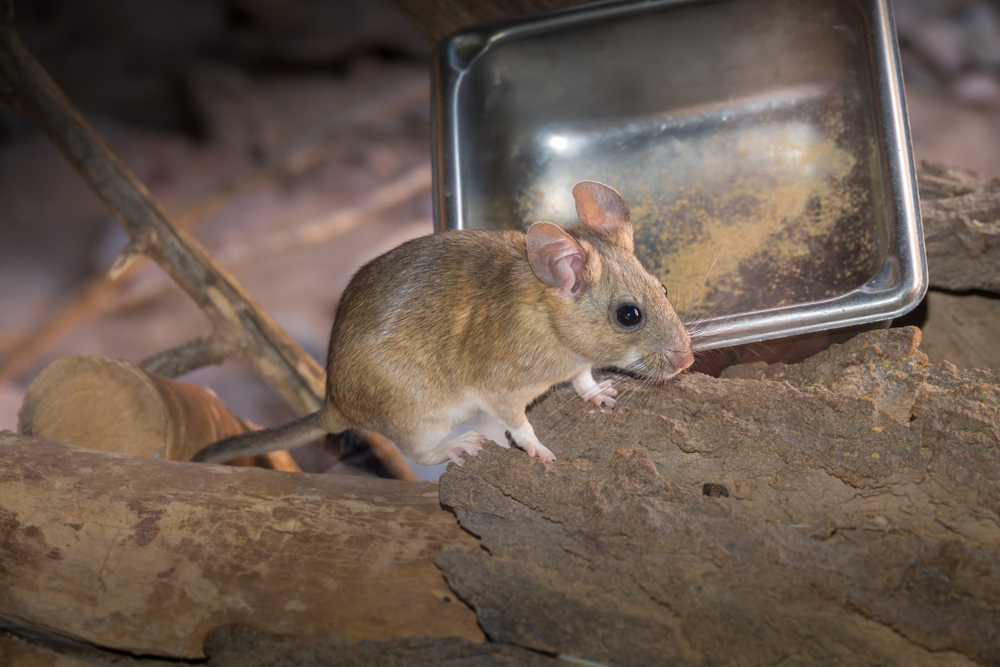Pack Rat: Tips for Managing Clutter Effectively
Struggling with clutter? Discover practical tips to manage pack rat tendencies and create a more organized space. Read the article for effective strategies!
The Ultimate Guide to Understanding the Pack Rat
Pack rats, or woodrats, are rodents native to North and Central America known for collecting shiny objects for their nests. This guide explores their traits, behaviors, and their environmental role. Discover what makes them unique and how to manage them.
- Pack rats, also known as woodrats, are adaptable rodents found across a variety of North American habitats and play important roles in ecological research.
- These small creatures are known for their unique nesting behaviors, collecting shiny objects to build elaborate structures that serve as food storage and protection.
- Responsible Pest & Scorpion Control offers effective solutions for managing pack rat infestations, with many satisfied customers highlighting their professional service and expert advice.
What is a Pack Rat?
Pack rats, scientifically known as the genus Neotoma, are a group of rodents native to North and Central America. Often referred to as woodrats, these creatures have captured the curiosity of many due to their distinctive behaviors and adaptability. One specific species, Neotoma cinerea, is particularly well-known among researchers and enthusiasts alike.
These rodents are primarily found in western North America and northern Mexico, inhabiting a variety of environments from boreal forests to desert regions. Bushy-tailed woodrats, a specific type of pack rat, are often found in high-elevation rocky areas, showcasing their remarkable adaptability to diverse temperature and moisture conditions.
Interestingly, pack rats are not just ordinary rodents; they play a significant role in ecological studies. Their presence and behaviors can serve as indicators of environmental changes within their habitats, making them valuable subjects for research. With such an intriguing profile, it’s no wonder these creatures have garnered so much attention.
Physical Characteristics of Pack Rats
Pack rats are small rodents, about the size of a small rabbit, easily recognized by their large, black eyes and bushy tails. Their tails can be half their body length and help them keep balance as they move around.
Another distinctive feature is their large ears, which give them a sharp sense of hearing. Combined with their long, sensitive whiskers, these ears help them detect changes around them and navigate their nests. Their fur varies from gray to brown, helping them blend into their surroundings for protection.
Adult pack rats typically weigh between 1 and 2 pounds and measure 12 to 16 inches long. These features make them easy to identify and help them survive in diverse environments.
Habitat and Distribution
Pack rats are versatile creatures, capable of adapting to many environments. They are mostly found in the deserts of the western United States and northern Mexico. However, their presence also extends to boreal forests and rocky highlands. Each pack rat species prefers specific habitats, occupying unique ecological niches within their ranges.
These rodents build intricate nests called middens. They use materials such as twigs, cactus parts, and other debris. Some species, like the white-throated woodrat, prefer to nest at the base of cacti for protection. While they usually build homes in natural places like caves or rocky crevices, pack rats can also live in human structures like attics. This shows their adaptability.
The nesting behavior of pack rats impacts their environment. Their habit of collecting and storing materials affects soil composition and promotes plant diversity. This contributes to ecosystem health. Understanding this relationship highlights the importance of preserving these unique rodents.
Unique Behaviors and Traits
One of the most fascinating aspects of pack rats is their behavior of collecting shiny objects and building elaborate nests. These nests, or middens, are often composed of twigs, cactus parts, and various other stuff, serving multiple purposes including food storage. The middens can become quite extensive, incorporating a wide variety of items, from colorful objects to plant fragments and bones, creating complex structures that are a testament to their industrious nature.
Pack rats are also known for their strong homing instincts. Even after being moved away, they frequently return to the same nesting locations, demonstrating a remarkable attachment to their homes. This behavior can be both a blessing and a curse, as it showcases their resilience but also makes them a persistent problem for those dealing with infestations.
Primarily nocturnal, pack rats are most active during the night, scavenging for food and materials to add to their nests. This nocturnal lifestyle helps them avoid many of their natural predators and allows them to thrive in their environments. Their unique behaviors and traits make them a subject of ongoing fascination and study.
Reproduction and Life Cycle
The reproductive habits of pack rats are just as intriguing as their behaviors. Female pack rats can have up to five litters annually. Each litter may contain as many as five offspring. This high reproductive rate helps maintain their populations, despite the many threats they face in the wild.
Newborn pack rats are initially blind and require significant care, staying in their nests, known as middens, for protection and nourishment. They begin to open their eyes between 10 and 12 days after birth and are weaned within a range of 14 to 42 days. This early development is crucial for their survival, as it prepares them to navigate their environments and fend for themselves.
Most pack rats reach sexual maturity around 60 days after birth, allowing them to start their own families and continue the cycle. The populations of pack rats may exhibit cycles in their numbers approximately every eight years due to fluctuations in reproduction and juvenile survival rates. Understanding their life cycle provides valuable insights into their behavior and population dynamics.
Predators and Threats
Pack rats face a variety of natural predators, including hawks, owls, coyotes, bobcats, and snakes. These predators play a crucial role in controlling pack rat populations and maintaining the balance of their ecosystems. Despite the constant threat of predation, pack rats have developed several strategies to survive.
One of the most notable traits of pack rats is their intelligence. They are known to avoid normal rat traps, making them a challenging pest to control. This intelligence, coupled with their nocturnal habits and strong homing instincts, allows them to evade many of the dangers they face in the wild.
Human activities also pose a significant threat to pack rats. Habitat destruction, pollution, and climate change can all impact their populations and disrupt their natural behaviors. It is essential to recognize these threats and take steps to mitigate their impact, ensuring the survival of these unique rodents.
Dealing with Pack Rats: Tips and Solutions
Dealing with pack rats can be challenging, but with the right approach, you can manage and prevent infestations. Start by eliminating potential nesting sites. Clean up debris and seal entry points to your home. Removing food sources and using traps also helps control their populations.
However, pack rats are intelligent and persistent. Often, professional pest control services are necessary. Responsible Pest & Scorpion Control is a trusted name in the industry. They offer effective solutions for pack rat problems. Their services guarantee effective scorpion and pest control at affordable prices. With years of experience and attention to detail, they help achieve a pest-free property.
The Role of Pack Rats in the Ecosystem
Pack rats play a vital role in their ecosystems. They serve as both prey and ecological engineers. As a food source for various predators, including hawks, owls, coyotes, and snakes, they are an integral part of the food web. This supports the survival of these larger species.
In addition to being prey, pack rats help disperse seeds. By consuming fruits and nuts and transporting seeds away from the parent plants, they aid the growth of new saplings. This promotes ecological diversity.
Their activities also preserve ecological records. Their middens accumulate over years and offer insights into environmental changes. The urine of pack rats solidifies within their middens, acting as a natural adhesive. This helps save organic materials for thousands of years. Such preservation provides valuable data for researchers studying historical environmental conditions. Thus, pack rats are essential to both current ecosystems and scientific research.
Customer Experiences with Pack Rat Control
Clients have reported a significant reduction in pack rat activity after using the pest control services. They praise the thoroughness and knowledge of the technicians. This level of expertise ensures that pack rat infestations are managed effectively and future problems are prevented.
Follow-up services are a key aspect of customer satisfaction. These services ensure long-term management of pack rat infestations and provide peace of mind for homeowners. With such high praise from customers, it’s clear that Responsible Pest & Scorpion Control is the trusted choice for dealing with pack rats.
Understanding pack rats involves delving into their physical characteristics, unique behaviors, and ecological roles. These rodents are much more than nuisances; they are vital components of their ecosystems. They contribute to seed dispersal and serve as prey for various predators. Their fascinating behaviors, such as collecting shiny objects and building intricate nests, make them subjects of ongoing research and curiosity.
For those dealing with rat infestations, professional pest control services like Responsible Pest & Scorpion Control offer effective solutions and peace of mind. By understanding and managing these unique rodents, we can appreciate their ecological importance and help maintain a balanced and healthy environment.
Frequently Asked Questions
What are pack rats attracted to?
Pack rats are drawn to vegetation and wooden materials, so if you’ve got greenery or wooden structures around, they’re likely to take interest. Keep them at bay by sealing up any potential habitats and removing tempting snacks.
What is the difference between a pack rat and a regular rat?
Pack rats have furry tails and softer fur, while regular rats, like Norway rats, have scaly tails and are generally less furry. So, if you spot a rat with a hairy tail, you’re looking at a pack rat!
What does it mean to call someone a pack rat?
Calling someone a pack rat means they’re a collector who just can’t let go of their belongings. If you’re living with one, be prepared for a bit of clutter!
What are pack rats?
Pack rats, also known as woodrats, are rodents that love to collect shiny trinkets and build elaborate nests. They’re a quirky part of the North and Central American wildlife scene!
How large do pack rats get?
Pack rats usually weigh around 1 to 2 pounds and are about 12 to 16 inches long. They’re pretty small critters!



